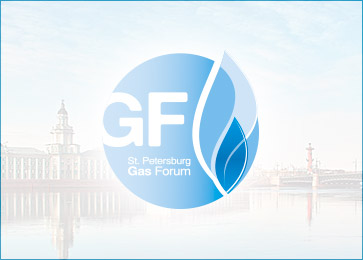
On October 4, the "LHG market: Moving towards Openness" conference was held at Expoforum Exhibition and Convention Centre. The experts summed up interim results of the development of the industry and outlined the top-priority trends of the liquefied hydrocarbon gas (LHG) market.
At the end of 2016, LHG production in Russia reached 15.8 million tons. The growth of the resource base amounted to approximately 600 tons. This data was given in the summary market report by Leonid Kruchinin, Deputy Marketing Director of Impeksneftekhim. There was also a significant increase in LHG consumption in the municipal and household services sectors.
The growth in consumption for petrochemicals was low, as the growth in consumption for dehydrogenation was offset by a reduction in consumption of pyrolysis. In 2016, there was an insignificant growth in exports, but this segment is still the most capacious and is 42%.
According to the outcomes of 7 months of 2017, as compared to the previous year, the production of commercial LHG remained at the same level (8.9 million tons), the production of NGL decreased by 200,000 tons (to reach only 6.3 million tons), while shipment of NGL for pyrolysis decreased by 0.4 million tons. This means that the total resource base has decreased by 600 thousand tons.
"It is for the first time in recent years that we see a decline in LHG production, but it is too early to say that this is the final result, "– said Leonid Kruchinin.
Anton Karpov, Vice-President of SPIMEX said that according to the results of 9 months of 2017, the volume of LHG trading on the exchange was 530 thousand tons, which is 71% more than the same period last year. At the same time, the number of concluded contracts increased more than 4 times and reached 4,300. The sales pattern is dominated by 65% of NGL and FLH, followed by LHGs for the municipal and household sector and as a fuel (23%) and LHG for the chemical industry (12%).
Head of the Fuel and Energy Complex Control Department of the Federal Antimonopoly Service, Dmitry Makhonin reported that the FAS of Russia have found that a group of companies — Rosneft, Gazprom and SIBUR Holding — are dominant in the LHG market in the field of municipal and household sector and in the gas engine sector. He went on to say that last year the combined market share of these companies amounted to 67.2%. Mr. Makhonin also pointed out that in the near future three new bases of LHG delivery will emerge in Russia: Sibur-Tobolsk, Gas treatment plant Nyagangazpererabotka and Tomskgazprom. "This is an indicator of a successful progression of the LHG market towards the openness that we are looking forward to," – said the expert.
Dmitry Mironov, CEO of Gazprom Gazenergoset, speaking at the conference, noted that by the end of 2017, direct contracts remain the main gas trade channel. Notably, direct contracts account for half of all sales of LHG of Gazprom Group. It is expected that their share in the sales pattern will remain at the level of 2016 – 48% of the production volume of Gazprom plants. "Nevertheless, the share of exchange sales is increasing. By the end of 2017 it will reach 6%. The share of electronic trading (Electronic Trading Platform eOil) is not changing significantly and will remain at about 5-6%, " – said Dmitry Morozov. He particularly stressed that the relationship between trading on the exchange and electronic trading platforms is not competition, but synergy: "Some buyers prefer to buy fuel on the exchange and others prefer click and mortar. These channels complement each other, each consumer finding a more effective sales channel, which makes the market more convenient and open. Using both these sales channels, we are giving more opportunities to both the market and ourselves ".
At the same time, Deputy Head of the Department for Gas and Petrochemical Products Sales of Gazprom Gazenergoset, Sergei Stepanov said that the sales of LHG at the electronic trading platform (ETP) eOil in the regional small-scale wholesale segment have grown during this year and are bound to reach 109.4 thousand tons by the end of 2017. This is more than double the indicator of the previous year. "Direct contracts, of course, remain the predominant LHG sales channel. However, sales through ETP are steadily growing. This is due to the company's policy to open new sales bases for electronic trading in the regions. Now electronic trading is conducted via the bases in Nizhny Novgorod, Orenburg, Tambov, Lipetsk, Volgograd, Bryansk, Belgorod, Oryol and Kursk regions. Among the promising ones are Vladimir, Rostov, Astrakhan, Krasnodar, Tatarstan and a number of other regions,"– the expert added.
During the conference, Dmitry Mironov also said that Gazprom Gazenergoset is working to create a new transparent price index for the market of liquefied hydrocarbon gases– PBSURGAZP fixing. Trading figures on the exchange and ETP will be used to calculate the index. As a strike price shall be assumed the PBSURGAZP fixing value for propane-butane calculated as the arithmetic mean of daily average prices on trading floors for the last five days of the month. The next stage will be the launch of a settlement futures contract. Gazprom Gazenergoset as a major player on the Russian LHG market should not only focus on the existing indicators, but also create its own, – summed up Dmitry Mironov.